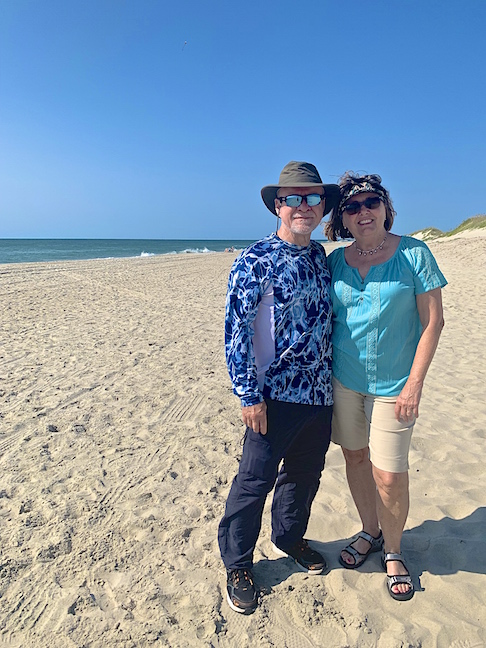
This replica of the first motorized flying machine at Wright Brothers National Memorial looked delicate, but it ushered in man’s age of flight. The Real Wright Flyer the brothers used in 1903 for the first takeoff is in the Smithsonian National Air and Space Museum.
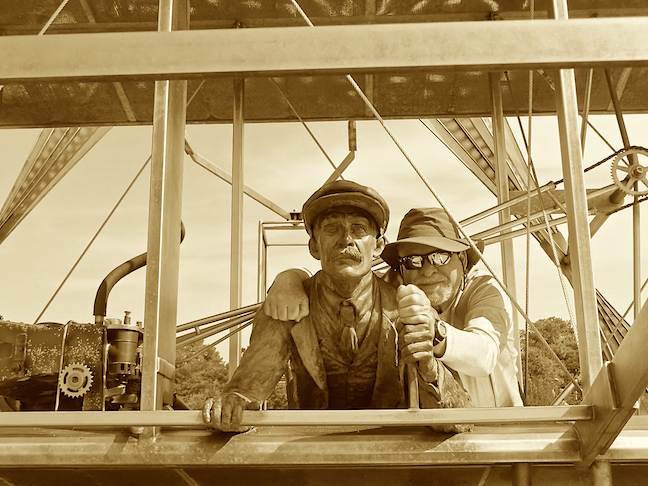
A life-size sculpture of the first flight, made of bronze and stainless steel, invites visitors to insert themselves in the historic day. I’m helping Orville steady the plane on takeoff.
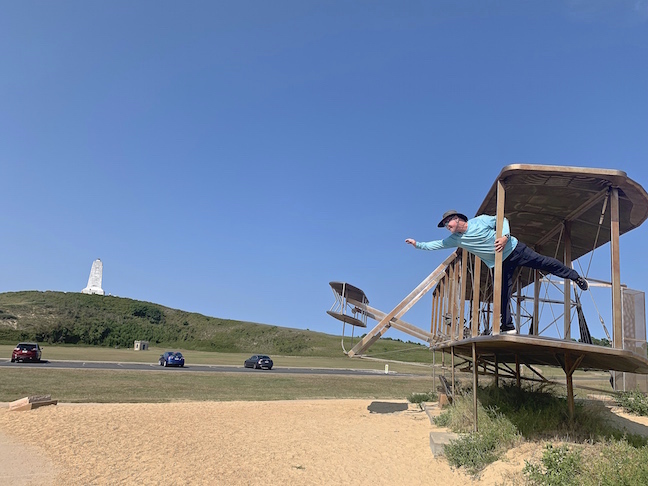
Wing walking on the initial flight didn’t happen and the Wright Brothers would have been appalled by the idea. The Wright Brothers Monument sits atop Kill Devil Hill in the background.
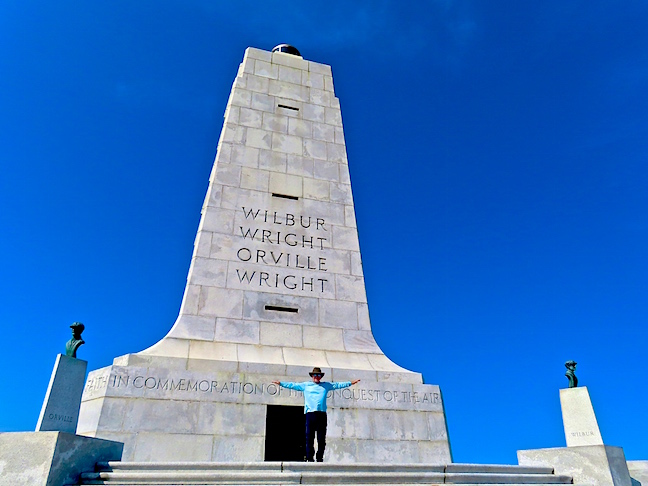
The Wrights made over 1,000 glides off the top of Kill Devil Hill before attempting a takeoff on level ground. All the testing and actual flights took place in the Kill Devil Hill area. Kitty Hawk was just the closest town with a telegraph to report their success.
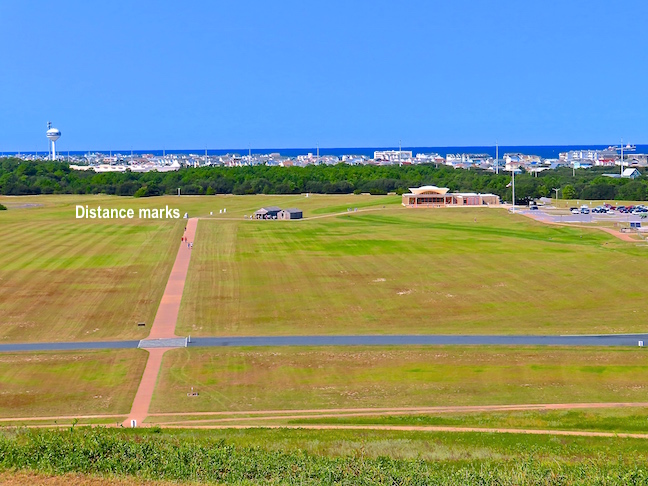
From the top of Kill Devil Hill, you can see white distance markers showing the exact location of the liftoff point and the first-four flights. Flight 1 was 12-seconds and 120-feet long. Flight 2, 12 seconds and 175 feet. Flight 3, 15 seconds and 200 feet. The Fourth Flight lasted 59 seconds and traveled 852 feet. Doesn’t sound like much now, but it was earthshaking in 1903.
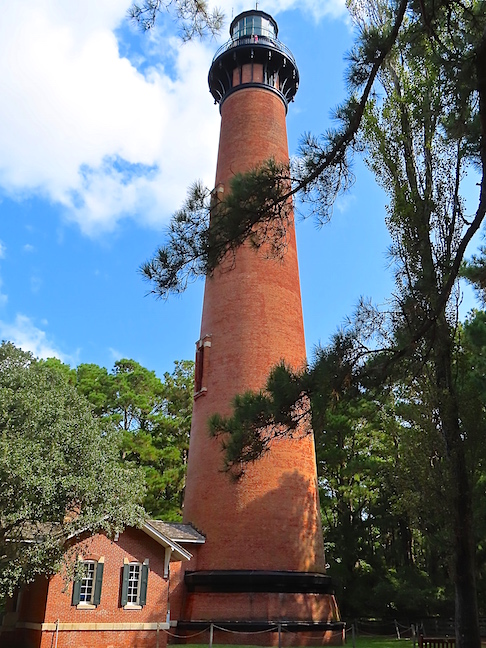
Kill Devil Hills, Kitty Hawk and Duck are densely developed and commercialized. Driving north past them, buildings thin out and houses get grander. When we reached the Currituck Beach Lighthouse, the atmosphere was much more relaxed.
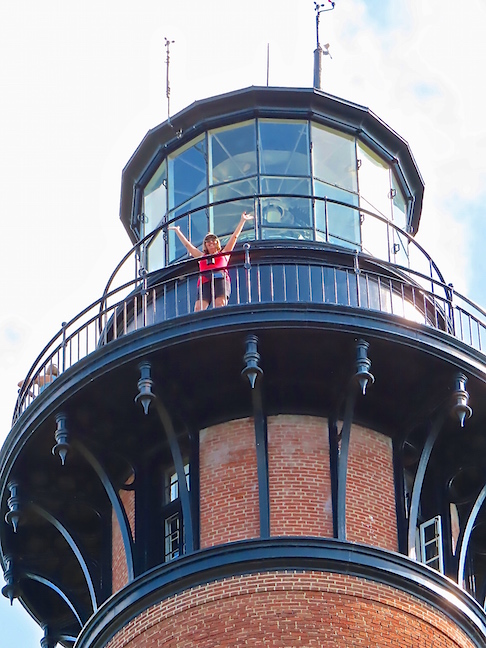
The Currituck Beach Lighthouse was opened in 1875. Climbing the 220 steps rewarded us with spectacular views of Currituck Sound. The red brick was never painted to set it apart from coastal lighthouses.
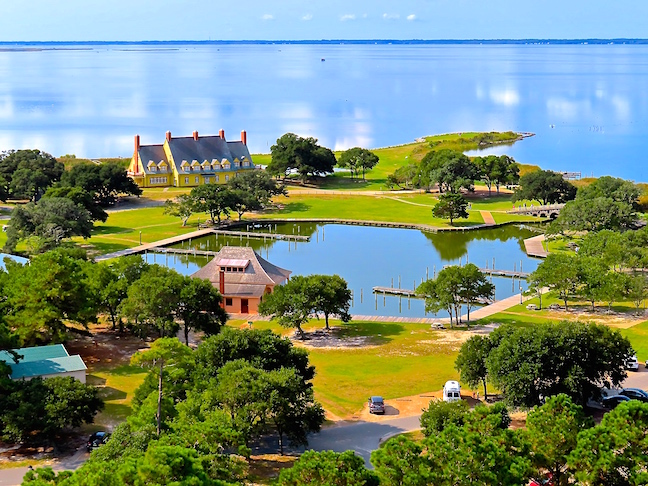
The 21,000-square-foot Whalehead Club is the large yellow building across the inlet. It was built by Edward Collings Knight, Jr. in 1920 as a nice place to entertain friends.
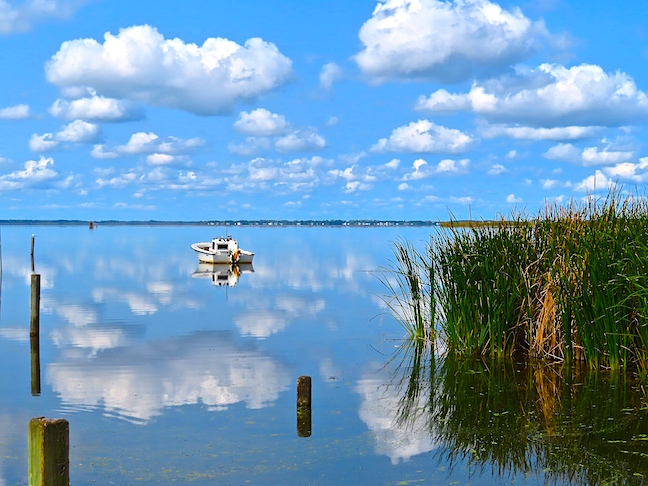
Currituck Sound was a hot spot for hunting waterfowl for restaurant menus until 1918 when the sale of migrating birds was outlawed in the Outer Banks. It was idyllic while we were there.
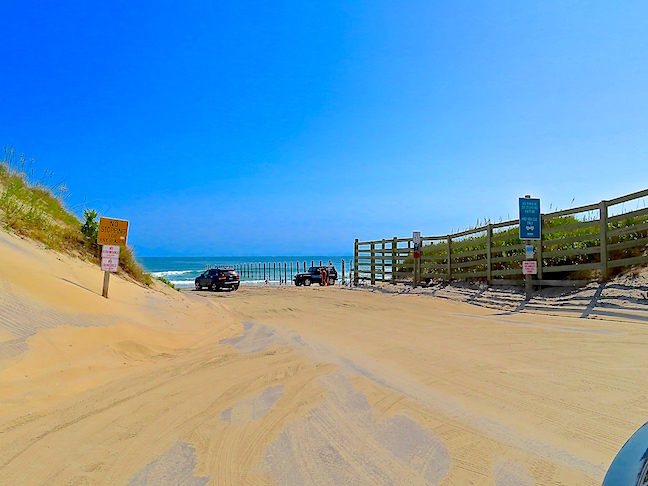
Highway 12 ends and becomes deep sand requiring four-wheel-drive vehicles in Corolla. There are free-roving wild horses and high-dollar beach houses past this point, but our rental car was not equipped to take on the soft beach driving.
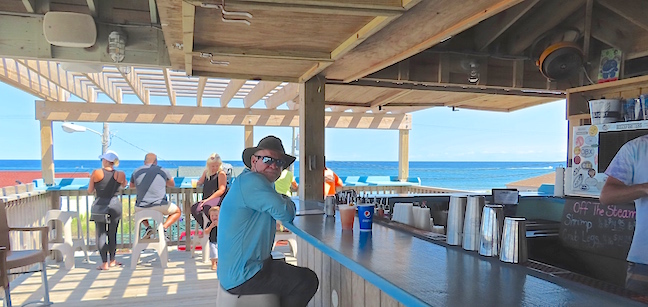
We had a late lunch at Art’s Place on the third level, aptly named the “Sway Bar,” on the way back to our Airbnb. A tiny beach house built in the 1940s, became a “little joint” in 1978 and they served us an incredible burger. What a great find to stumble upon on in Kitty Hawk.
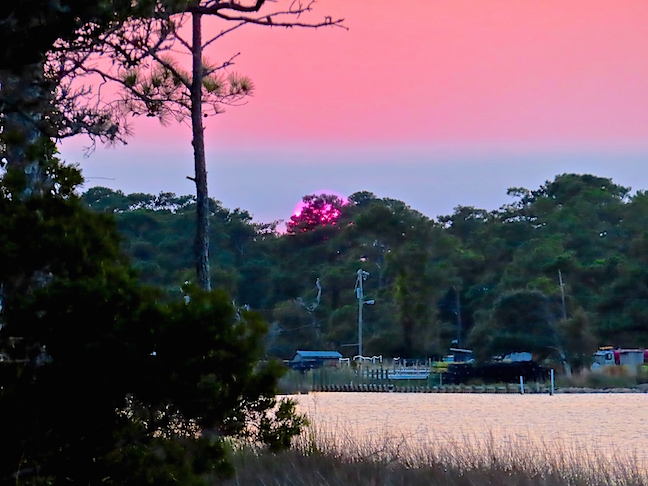
Our last night in the Outer Banks, we went to Blue Crab Tavern for live music on the south end of Kitty Hawk Bay. The sunset from the screened-in dock was a fitting ending for our Outer Banks adventure. The gal that sang had a sweet voice, the beer was a cold bargain and we were ready to move on to Norfolk the next day.

